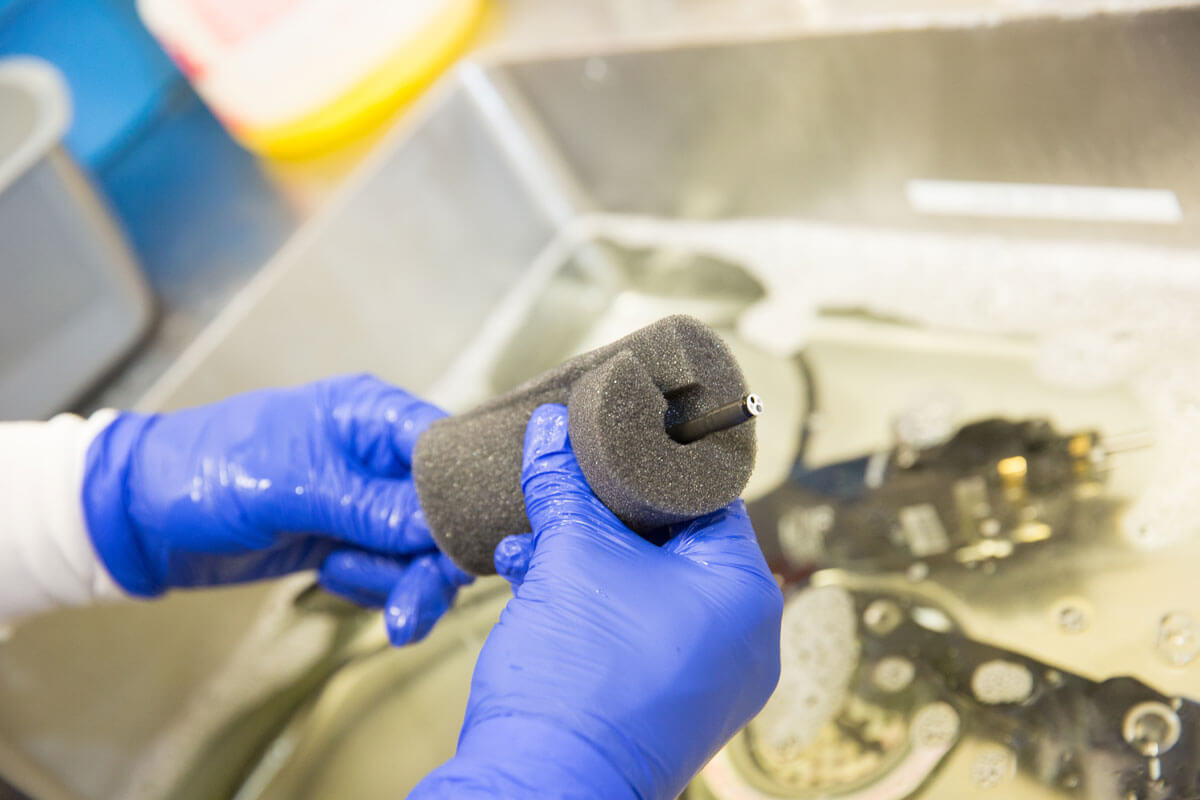
Adequate reprocessing of flexible endoscopes is vital to protecting patient safety. And in a process that requires 50 to 100 different steps, there can be no shortcuts if endoscope reprocessing is going to effectively prevent patient infection.
Especially when it comes to the manual clean.
Reprocessing for all flexible endoscopes requires a series of sequential subtasks under
the main categories of:
Each of these steps and sequential subtasks may vary slightly based on the manufacturer instructions for use, the type of endoscope, and the society guidelines adopted by the hospital or clinic. Each step, however, must be completed thoroughly and properly if reprocessing is going to adequately remove the risk of cross-contamination.
One of the biggest threats is biofilm. Once formed, biofilm is incredibly hard to remove from a flexible endoscope. Biofilm can also act as a shield for bacteria against chemical disinfectants, which is why immediate bedside cleaning and manual cleaning are so crucial to reprocessing success.
Research shows that high-level disinfection with an automated endoscope reprocessor (AER) doesn’t adequately remove contaminants without proper bedside and manual cleaning.
The manual clean of a flexible endoscope is usually performed while the device is immersed in a cleaner, according to guidelines from the Society of Gastroenterology Nurses and Associates. All brushing of the channels and endoscope components must be done with the scope submerged.
As the name of the task suggests, this step is done by hand. Some AERs include manual clean settings. The FDA recommends reprocessing technicians perform the manual clean by hand and reserve the AER for high-level disinfection of duodenoscopes.
Duodenoscopes are considered one of the more difficult endoscopes to clean because of their multiple channels and elevator mechanism on the distal tip. Surveys show the manual reprocessing steps can be taxing physically.
Reprocessing technicians have reported suffering from respiratory ailments related to the odors in the reprocessing suite as well as physical discomfort in the back, neck, hips, legs, feet, hands, or arms. That’s according to a 2010 observational study, “Endoscope Reprocessing Methods: A Prospective Study on the Impact of Human Factors and Automation.” The study, conducted by Cori L. Ofstead, Harry P. Wetzler, Alycea K. Snyder, and Rebecca A. Horton, included interviews, surveys and direct observation of five reprocessing sites across the U.S.
“At baseline, nearly one-third of employees with occupational health problems believed the symptoms interfered with their ability to function inside and outside of work,” the authors concluded. “Employees reported missing work because of these health problems.”
Manual cleaning is just one aspect of a long, sometimes two-hour process to get a scope ready for use on the next patient. This step is critical, though, as the manual brushing can remove up to 99 percent of the bioburden from flexible endoscopes.


